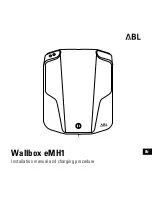
26
Body Builder Manual Part II, Specific Book LCV
V1.0, February 2015
INTRODUCTION
PRELIMINAR STUDIES AND CONSIDERATIONS
MAINTENANCE AND DAMAGE PREVENTION
WORK ON BASIC VEHICLE
MOUNTING AND CONSTRUCTION
POWER TAKE-OFF
ELECTRIC AND ELECTRONIC SYSTEMS
APPENDIX
2.3.3
Weight distribution
To meet customer needs and ensure the smooth operation of the vehicle and its du
-
rability, when building a body to join a particular chassis, proper weight distribution
of the whole vehicle should be ensured, so that the maximum allowable load capac
-
ity of the axles can be utilised. Always take legal requirements and the technical ca
-
pabilities of each vehicle into account.
The ultimate goal is to achieve the best possible location of the body on the chassis.
For this purpose, the following guidelines should apply:
Unilateral axle load:
When the body is planned and designed, unilateral load situations should be avoided.
The maximum load difference between the wheels on the same axle must never ex
-
ceed 4 %, in order to avoid the inclination of the vehicle to one side. This difference
will always be applied to the actual axle load, not to the admissible axle load.
Fig. 2-21 Unliteral axle load
Example:
Actual axle load P
T
= 3,000 kg:
Maximum load difference:
Δ
P
Maximum load difference
P
L
Left wheel load
P
R
Right wheel load
P
T
Actual axle load
Δ
P
= P
R
- P
L
≤ 4 % P
T
Δ
P
= 0.04 * 3,000 kg = 120 kg
Maximum permissible wheel load:
P
L
= 1,440 kg
P
R
= 1,440 kg
















































